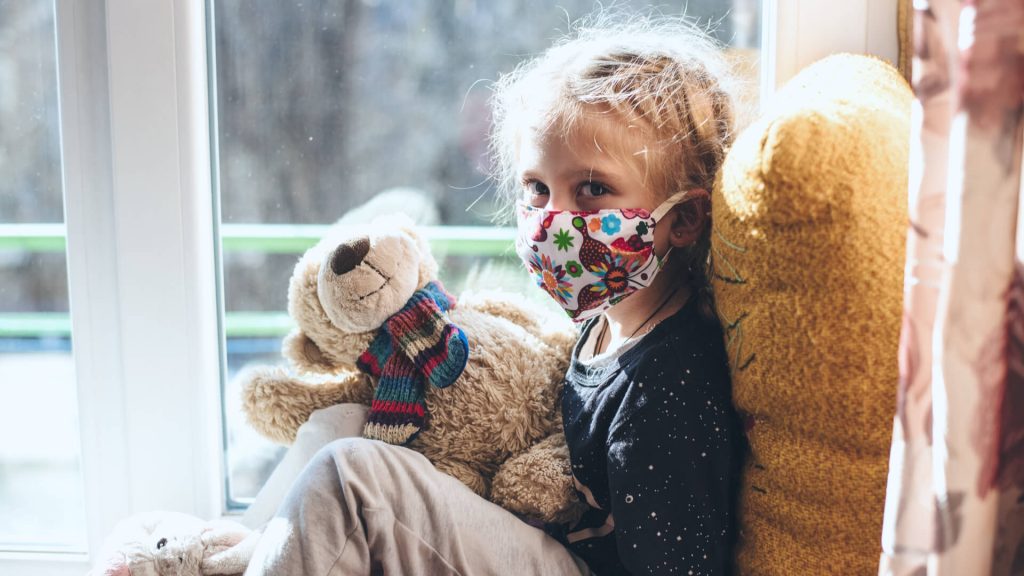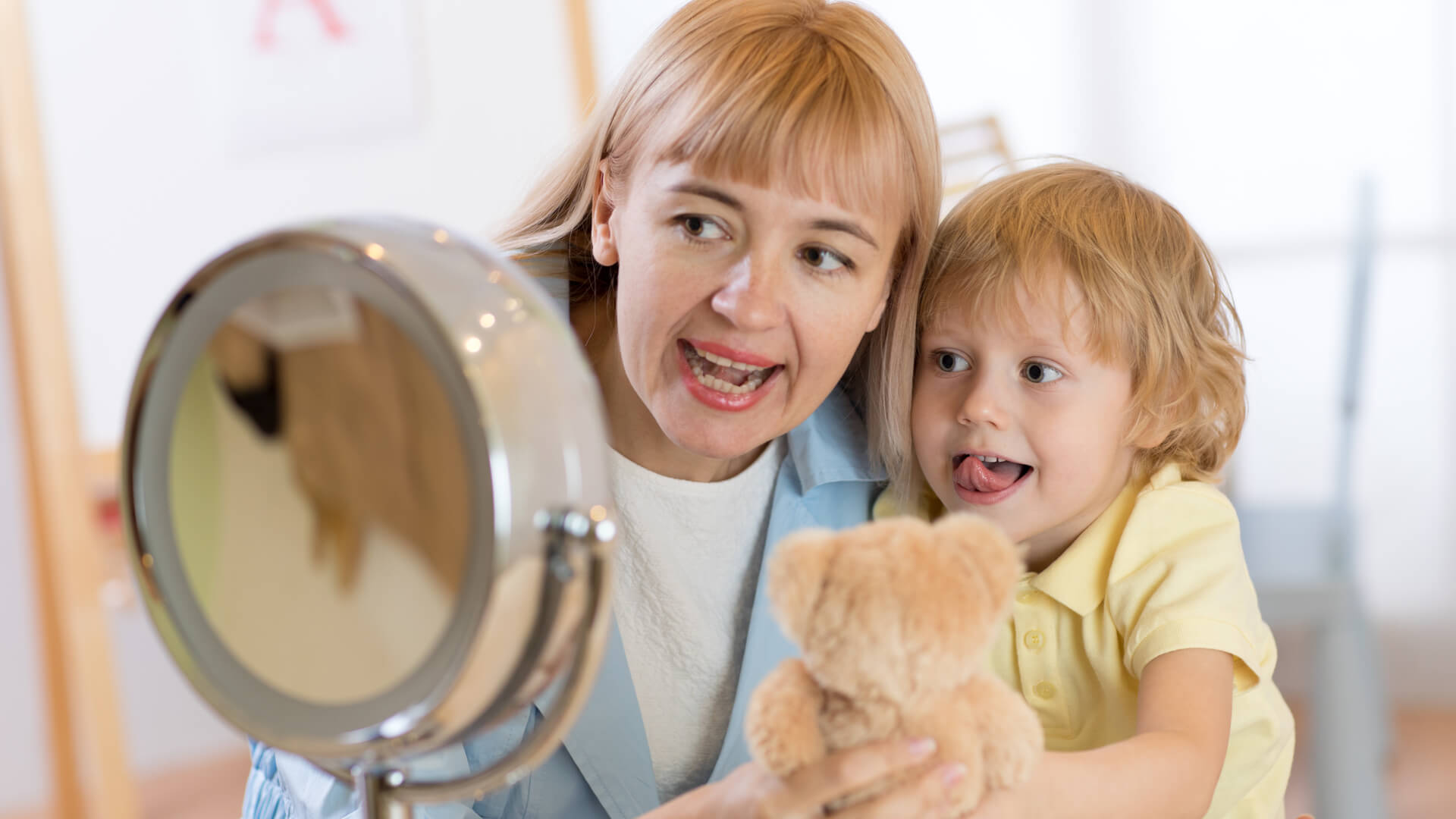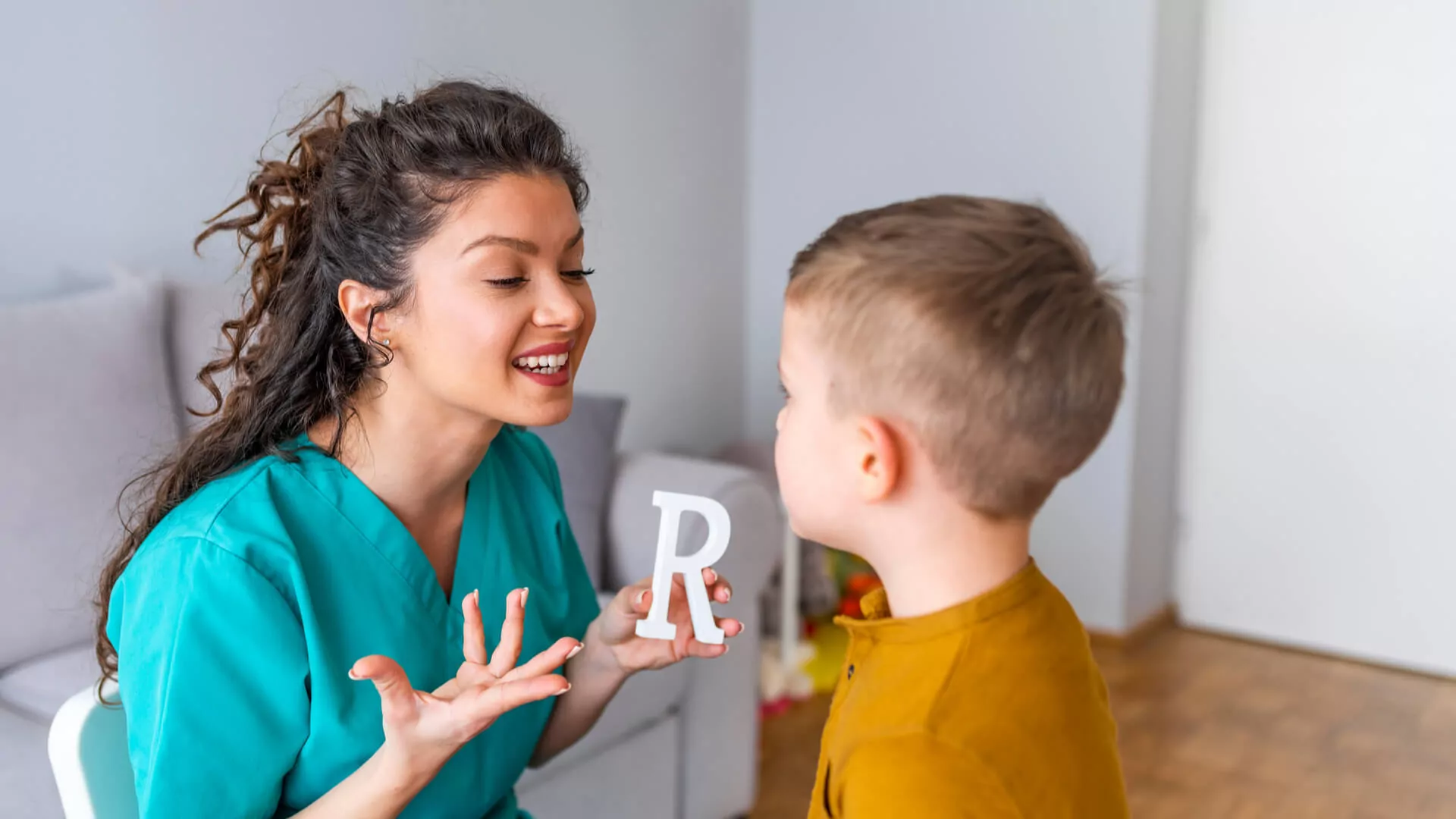Tips to Improve Communication with a Child Wearing a Mask
Feb 4, 2022 Typically, wearing a mask in October is not an uncommon thing. Who doesn’t love to see kids running around in their favorite Halloween mask accessory? Unfortunately, wearing a mask is now an important part of our daily attire to help stop the spread of Covid-19 . . . but it’s no treat!
In This Article
As a speech-language pathologist, I know the impact that mask-wearing can have on communication; however, in my opinion, wearing cloth face coverings is absolutely necessary to help save lives. It is important that we take precautions like children’s masks to assist with communication while keeping our families safe.
This blog attempts to give parents ways to improve their communicating while wearing a mask, and more specifically how to communicate with a face mask. To improve your communication skills and to communicate effectively, I present you with the following remedies.
Boost Your Child’s Speech Development!
Improve language & communication skills with fun learning!

How can Masks Impact Children’s Speech, Language, and Hearing?
Hearing Impairments

There has been a lot of information on social media about how masks make it difficult for people with hearing impairment to hear because it blocks the sound quality of the speaker and takes away the ability to lip read and see facial expressions. The following accommodations may be helpful for kids with hearing loss both at home and at school.
How you can help a child with a hearing impairment:
- In schools, use FM systems with pass-around microphones so children can not only hear the teacher but also be able to access peer messages.
- If your child is a remote learner, ensure that you have the FM system at home with appropriate computer cords so that your child can access the remote instruction.
- Complete a student mask preference assessment to identify adequate auditory perception between different types of masks (e.g., cloth vs. clear).
- Teachers and staff should wear clear masks to help with improving the ability of your child to use lip reading and to see facial expressions. An anti-fog material should be used to ensure that masks do not get foggy, thus impairing the speaker’s mouth.
- Request comprehension checks, repetitions, and clarifications within the classroom.
- Encourage your child to self advocate by asking for repetition of information or clarity of understanding.
- Make sure to face your child when speaking especially with a mask on.
- Talk slower, slightly louder to compensate for the mask, and enunciate your sounds in words to improve the clarity of speech.
Voice Disorders and Children’s masks

Children with voice disorders typically have an anatomical abnormality (e.g., vocal nodules, polyps, inflammation, etc.) that causes their voices to sound raspy and/or hoarse. Children with voice disorders have described to me that when they wear a mask, they feel the need to talk louder so people can hear them.
To remedy that, these children raise and strain their voices. When they attempt to raise their voices, they often can further impact their vocal fold function. My concern is that mask-wearing could create worsening voice issues for all children and/or adults who may misuse their voices to compensate for mask-wearing. The following accommodations are useful for both home and in school.
How you can help a child with a voice disorder:
- Please don’t ask children to raise their voices or to speak louder. As I said, this can just cause tension on the vocal cords.
- If you understand your child’s message, please repeat it so that they know that you heard them and then they won’t attempt to say it louder
- Make sure children drink plenty of water. Water hydrates the vocal cords. Send in a water bottle to school. You may need to request this as an accommodation.
- Help children by modeling appropriate distancing when using your voice. Walking closer to them, (within 6 feet at school) and/or teaching them to come closer to you rather than having them attempt to share their thoughts by raising their voice from across the room.
- Encourage children to use gestures to gain your attention, rather than them using their voices.
- If possible, walk to a quieter place in the room or location to talk.
- If there are multiple children in the home, encourage “talking-turns” to allow each child to have quiet, uninterrupted speaking time.
Language Impairments

Children with language impairment are also impacted by the use of masks. Children who have difficulty understanding oral language often rely on facial expressions and body language to help fill in the pieces of the messages that they miss in instruction and/or conversation. Understanding language is hard for these students and with masks on it can make it more challenging.
When faced with these obstacles, some students may shut down, become upset, or anxious. The following accommodations are useful for home and school.
How you can help a child with a language impairment:
- Talk slower, try to emphasize your words, and pause between your thoughts to allow for comprehension.
- Reduce the use of extraneous language.
- Encourage children to self advocate and request for repetition and clarification as needed. It is okay for your child to say, “I don’t understand.”
- Use gestures/body language to help. For example, point to where you want them to go, wave them to come over to you, and/or create a gesture for words like, “stop or wait.” Gestural cues are powerful means of improving comprehension.
- Make visuals or checklists for children to follow or to improve their understanding, For example, make a picture “to do” list for children to refer to.
- Use a visual schedule to help children understand their expectations.
- Use an analog child friendly clock, like the Bee A Time Keeper clock, to help children “see and feel” the passage of time and time expectations aligning with the visual schedule.
- If possible, go to a quieter place in the room to talk.
- Have children repeat directions to ensure that they have understood them.
- Avoid sarcasm or jokes because they can be confusing for children with language impairments.
Speech Impairments

Children who present with delayed speech sound production may be more difficult to understand while they are wearing a mask. As adults, we learn to decipher children’s sound errors by listening and watching their mouths and facial expressions. A mask prevents the visual component of the child’s message and can sometimes “muffle” their speech clarity. Your child may become frustrated due to the difficulty in communicating their thoughts clearly to you and their teachers.
In addition, parents and teachers can become frustrated by their lack of understanding. These accommodations may be beneficial for verbal communication in both the home and at school.
How you can help a child with a speech impairment:
- Have your child wear a clear mask to help the listener to better understand your child’s message. Use anti-fog material to ensure vision of your child’s mouth.
- Please don’t ask children to raise their voices or to speak louder. As I mentioned earlier, this can put your child at risk of developing a voice disorder.
- If you understand your child’s message, please repeat it so that they know that you understood them and then they won’t attempt to say it louder.
- If possible, walk to a quieter place in the room or location to talk.
- Model a slower rate of speech and enunciate your own speech sounds.
- If there are multiple children in the home, encourage “talking-turns” to allow each child to have quiet, uninterrupted speaking time.
- If you don’t understand the child’s message, encourage them to “show you” or use gestures to improve your understanding.
- Ask yes/no questions (e.g, “Did you say you wanted a snack?”) or multiple choice questions (e.g. “Do you want juice or milk?).
- Repeat sound errors correctly once identified (e.g. “rabbit” for “wabbit”).
Obviously, in the home, mask wearing is often not necessary; however, out in the community or in school the above accommodations will be beneficial to support your child’s communication skills.
The American Speech-Language Hearing Association (ASHA) published some guidelines regarding mask wearing.
For more information, please contact your child’s speech-language pathologist or visit the American Speech-Language-Hearing Association.
